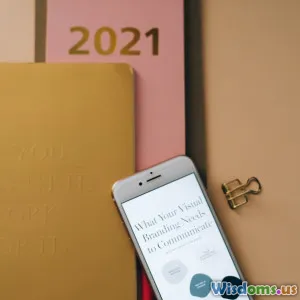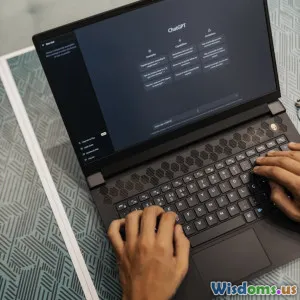
Freelancing as a Graphic Designer
7 min read Explore the ins and outs of freelancing as a graphic designer, from finding clients to managing your creative business. (0 Reviews)
Freelancing as a Graphic Designer
Freelancing as a graphic designer is a path that many creatives choose for its flexibility, potential for income, and the ability to work on diverse projects. However, it also comes with its own set of challenges. In this article, we will explore various aspects of freelancing, including how to find clients, set your rates, manage your time, and market your services effectively.
Understanding Freelancing
Freelancing is a form of self-employment where individuals offer their services to clients on a project basis. Unlike traditional employment, freelancers have the freedom to choose their projects, set their schedules, and work from anywhere. This flexibility is particularly appealing in the graphic design field, where creativity often thrives in less structured environments.
Finding Clients
One of the biggest challenges for freelance graphic designers is acquiring clients. Here are some strategies to effectively find and retain clients:
1. Build a Strong Portfolio
A compelling portfolio is essential. It showcases your skills and style to potential clients. Include a variety of work that highlights your versatility, and ensure that it’s easily accessible online. Platforms like Behance, Dribbble, and your own website are great places to display your projects.
2. Utilize Social Media
Social media platforms are powerful tools for connecting with potential clients. Share your work on Instagram, LinkedIn, and Facebook. Engage with your audience by posting behind-the-scenes content, design tips, or industry news. Networking through social media can lead to referrals and new projects.
3. Network and Collaborate
Attend industry events, workshops, and meetups to connect with other designers and potential clients. Collaborating with other creatives can also lead to new opportunities and help you learn from others in the field.
4. Use Freelance Job Platforms
Websites like Upwork, Fiverr, and 99designs can help you find freelance gigs. While competition can be fierce, these platforms offer a way to establish a client base, especially when starting out.
Setting Your Rates
Determining your rates as a freelancer can be challenging. Here are some factors to consider:
1. Understand Your Worth
Research what other graphic designers in your area or with your level of experience charge. Consider your skills, the complexity of the project, and the time it will take to complete. Don’t undervalue your work; remember that quality design takes time and expertise.
2. Pricing Models
Decide whether you will charge hourly or per project. Hourly rates can be beneficial for projects with unclear scopes, while project-based pricing can be more appealing to clients who prefer a fixed budget. Be transparent about your pricing to avoid misunderstandings.
3. Include Additional Costs
Factor in costs such as software subscriptions, equipment, and taxes when setting your rates. Additionally, consider including a buffer for revisions and additional rounds of feedback.
Time Management
As a freelancer, managing your time effectively is crucial. Here are some tips:
1. Create a Schedule
Establish a daily routine that includes time for meetings, design work, and breaks. This helps maintain a work-life balance and ensures that you meet deadlines.
2. Use Project Management Tools
Tools like Trello, Asana, or Todoist can help you stay organized. They allow you to track progress on various projects, set deadlines, and prioritize tasks.
3. Limit Distractions
Create a dedicated workspace where you can focus on your projects. Limit distractions by setting boundaries during work hours, whether it’s turning off social media notifications or using apps that block distracting websites.
Marketing Your Services
To attract clients, you need to actively market your services:
1. Develop a Personal Brand
Your personal brand should reflect your style and design philosophy. Create a cohesive visual identity that includes your logo, color palette, and typography. This consistency helps potential clients recognize your work.
2. Leverage Content Marketing
Start a blog or YouTube channel where you share design tips, tutorials, or case studies of your work. This positions you as an expert in your field and can attract clients who appreciate your knowledge and skills.
3. Ask for Referrals and Testimonials
Encourage satisfied clients to refer you to others. Collect testimonials that you can display on your website or social media. Positive reviews can significantly impact potential clients’ decisions.
Conclusion
Freelancing as a graphic designer can be a rewarding career path filled with opportunities for creativity and personal growth. By building a strong portfolio, effectively marketing your services, managing your time wisely, and setting fair rates, you can establish a successful freelance business. Remember, the key to thriving in the freelance world is persistence, adaptability, and a passion for design.
Rate the Post
User Reviews
Popular Posts





















